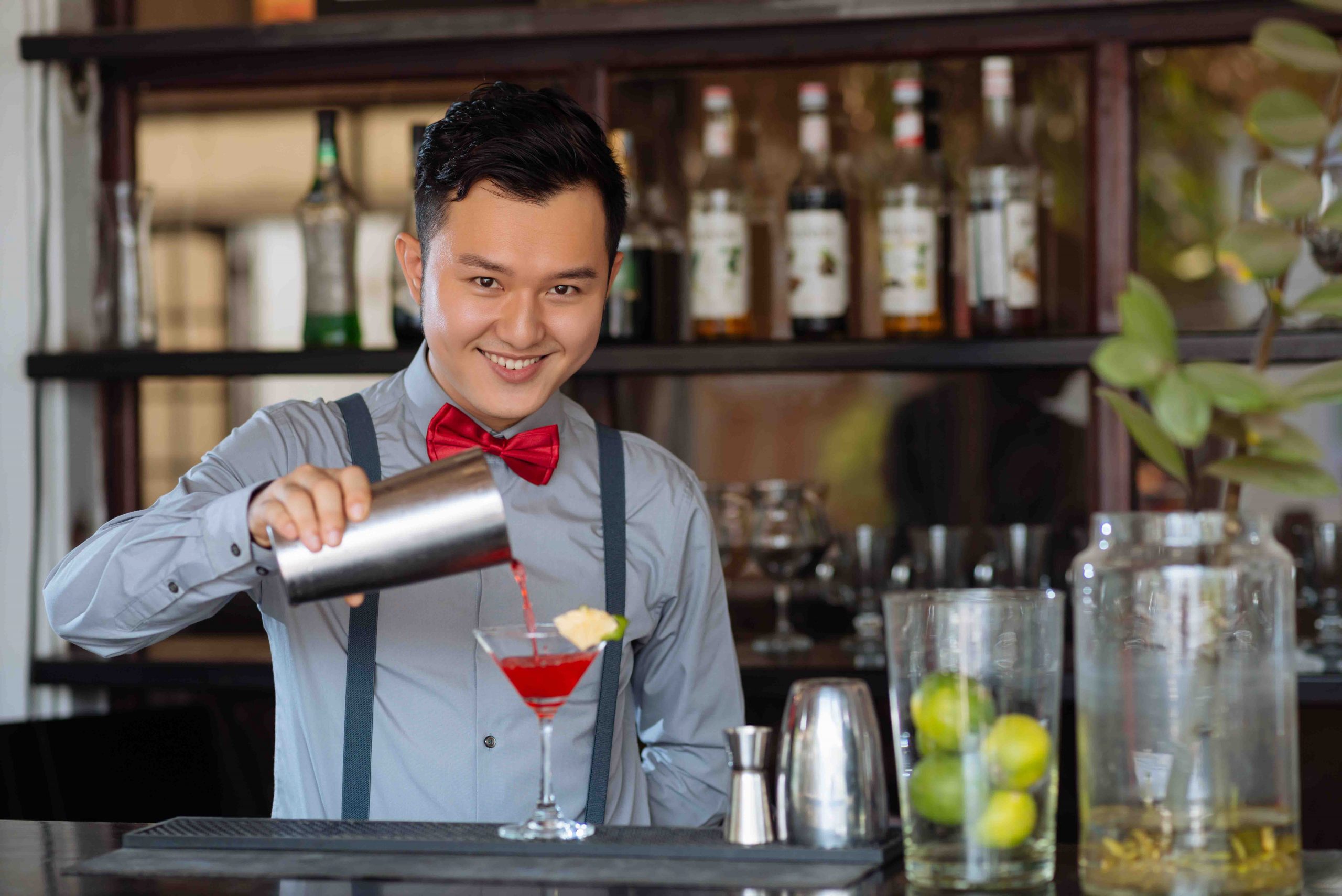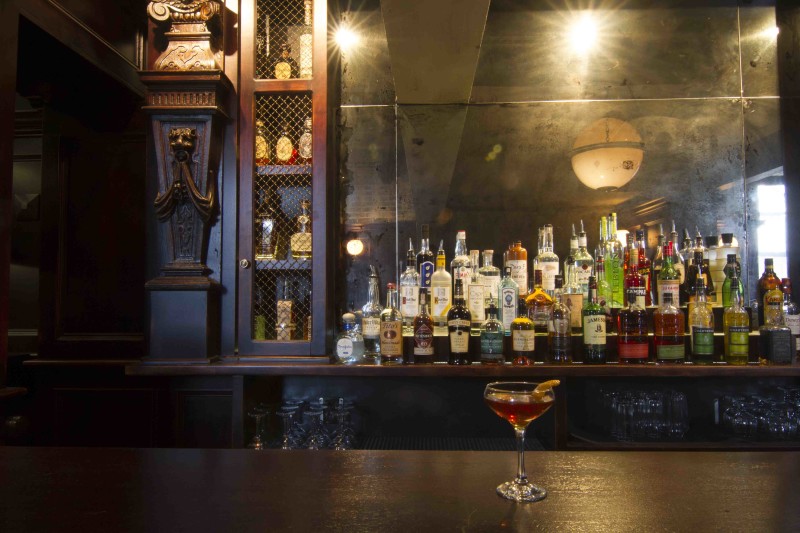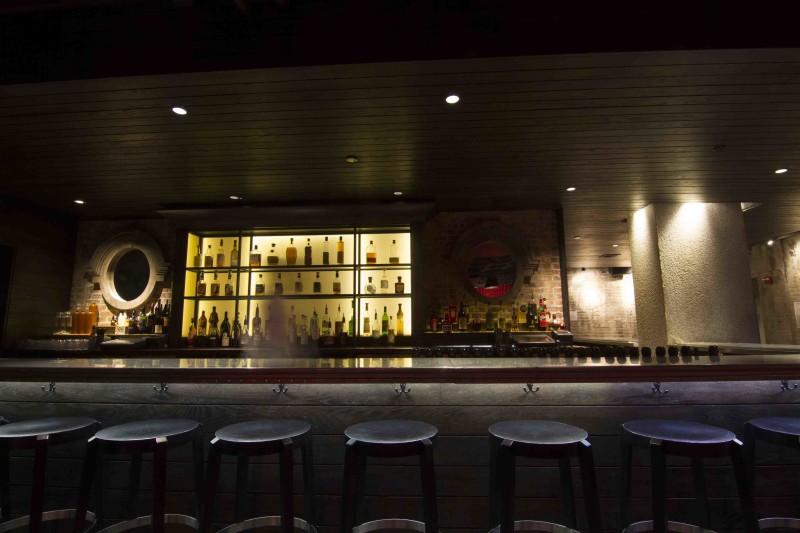


It’s not an easy thing, to run a bar.
Bar management takes a serious skill set: hospitality expertise, product knowledge, people management, marketing efforts, organization… This life is one of long nights and never-ending numbers, and at 3 a.m. there’s nothing more tiring than getting technical.
We’ve been there, which is why we’ve created a glossary of terms for bar managers, with the aim of making your job easier.
Here, you’ll find the ultimate bar management index, with definitions of the most common bar industry terms and examples of their practical application.
Save it to your desktop, pin it up in your storeroom, share it with your team.
Learn it inside out, and prepare to find beverage management a little bit easier.
This refers to the combination of several ingredients or products to make a large quantity drink, or “batch”. Here’s an example: infusing spirits, such as spicy tequila (several bottles of tequila with jalapenos), or preparing a large batch of sangria. These can be difficult to keep track of in inventory.
This refers to the act of “breaking up” a case. It’s cheaper to buy an entire case of liquor because distributors don’t need to break the case apart and deal with selling the bottles individually. However, top-end products, such as Johnnie Walker Blue, are almost always broken up because it’s too expensive for retailers to buy the entire case. Often, distributors charge a breakage fee.
A bartender will defer to the “well” brand liquor unless a customer specifies which brand they would like in their cocktail. This specific brand request is referred to as making a “call.”
These are the products that bring in the bucks. Their pour cost is low, their profit percentages are high, and they fly off the shelves every weekend. Cash cows are easy to identify with the right bar tech.
Comps—such as free drink giveaways or buying a round for regular guests—are paid for out of the pocket of the business. Voids, on the other hand, are essentially entry errors (the items go through the computer system but are never actually made, and consequently don’t cost the business anything). For accurate tracking, it’s important to ensure these items are clearly separated in your POS system.
There are several U.S. states where wholesale and, sometimes, retail sales for off-premise consumption are controlled directly by state-run government entities. The government maintains varying levels of control—from total control of all beer, wine and spirits to just spirits—in the following 18 states: Alabama, Idaho, Iowa, Maine, Maryland, Michigan, Mississippi, Montana, New Hampshire, North Carolina, Ohio, Oregon, Pennsylvania, Utah, Vermont, Virginia, West Virginia, and Wyoming.

Cost per ounce is the formula used to price liquor. Take the total dollar amount of a product and divide it by the number of ounces in the bottle. Use this cost-per-ounce formula to price products in each group to ensure you have low, medium and high price options. Or, head to our free Drink Pricing Calculator to easily price your bar’s drinks!
The “drop” is the minimum order amount a distributor requires for any order. For example, a certain distributor may require an eight-case drop to accept your beverage order.
This is the total time between ordering a product, having it delivered, and it being available for use. For example, we ordered our Tito’s Vodka on Monday. It was delivered on Thursday and available for use that day. This product has a lead time of 4 days.
A loss leader is a product that is sold below cost price in order to stimulate other, more profitable sales. An example would be pricing Prosecco below cost during a brunch sitting, with the aim of enticing customers to spend more on food and Bloody Marys. Loss leaders help attract attention, build a customer base, and allow you to drive up sales and prices of other products.
Download your free eBook: Guide to Bar Management
This refers to any retail location where beverages are sold but not available for consumption on the premises, such as liquor stores.
This refers to any retail location where beverages are sold for consumption on premise, such as bars, clubs, tasting rooms, and restaurants.
Pars represent the minimum amount of any given product a bar would like to keep in stock at all times. By setting pars, or “stocking goals,” you can immediately know when your inventory levels for a certain item need to be reordered, and you’ll avoid sitting on too little (or too much) stock. To set a par, you need to:
See more detailed tips on how to calculate pars for your own bar.
Pour costs, also referred to as your bar’s “percentages,” represent the percentage of cost that your drinks make up compared to your resulting sales. To determine your pour cost, simply divide your inventory usage by your sales. Multiply that number by 100 and throw a percent symbol at the end of it, and there’s your pour cost. Pour costs are influenced by:
Learn how to calculate pour costs for your bar.
“Premium” or “top shelf” liquor brands are the high quality bottles of liquor. Some establishments serve premium brands as their well brands—sometimes referred to as the “premium well”—in order to project a more high-class image.
This is the amount of an item that needs to be restocked in order to bring the item’s sitting inventory level to its par level.
Shrinkage is another term for product variance, or lost product. This is calculated as the difference in product between the amount sold and the inventory used. There are multiple causes for shrinkage, such as over-pouring, staff giveaways, and even theft. The industry average shrinkage rates are 20%. Here’s how to reduce shrinkage.
Sitting inventory is how much product you have physically sitting on the shelf waiting to be sold. It represents sitting dollars, and too much of any product can have a negative effect on your bar for many reasons. When ordering inventory, always consider how it affects the amount of sitting product because it represents money, risk and time. See more info on sitting inventory.

This refers to the three-tier alcohol distribution system put in place after the end of prohibition. The pyramid generally starts with the “suppliers” or “producers” of the alcohol, which is then moved by the “distributors” or “wholesalers” down to the “retailers.”
This is a term for how many weeks worth of product you have sitting on the shelf, or rather, how many weeks worth of sales your sitting inventory represents. This can be calculated by taking the amount of your sitting inventory and dividing it by your average weekly usage.
Well products are generally less expensive liquors that are used when a customer doesn’t specify their preference. Products normally used as “wells”—vodka, gin, tequila, rum, whiskey, bourbon—cost the least and are poured the most.
Product variance, otherwise known as “loss” or “shrinkage”, is one of the biggest detractors from a bar’s profitability. It represents the difference between the amount of product sold over a given period of time, and the amount of product used over that same period. Variance can be calculated as the cost of the product sold divided by its usage. In an ideal world, these numbers would line up perfectly, but, as we know, that isn’t the case in the industry. Find out how to calculate variance for your bar.
But you know what?
Even with this guide and its simple explanations, the painstaking tasks still remain. You still have to calculate your inventory, analyze pour costs, call all your reps, and finish complicated and time-consuming profitability calculations.
That’s why we’re here. We provide software that can do it all for you. Schedule a quick demo with one of our product specialists, and see how BevSpot can make beverage management easier.
Or, for more help managing your bar, check out our easy-to-use resources and bar management tips.

